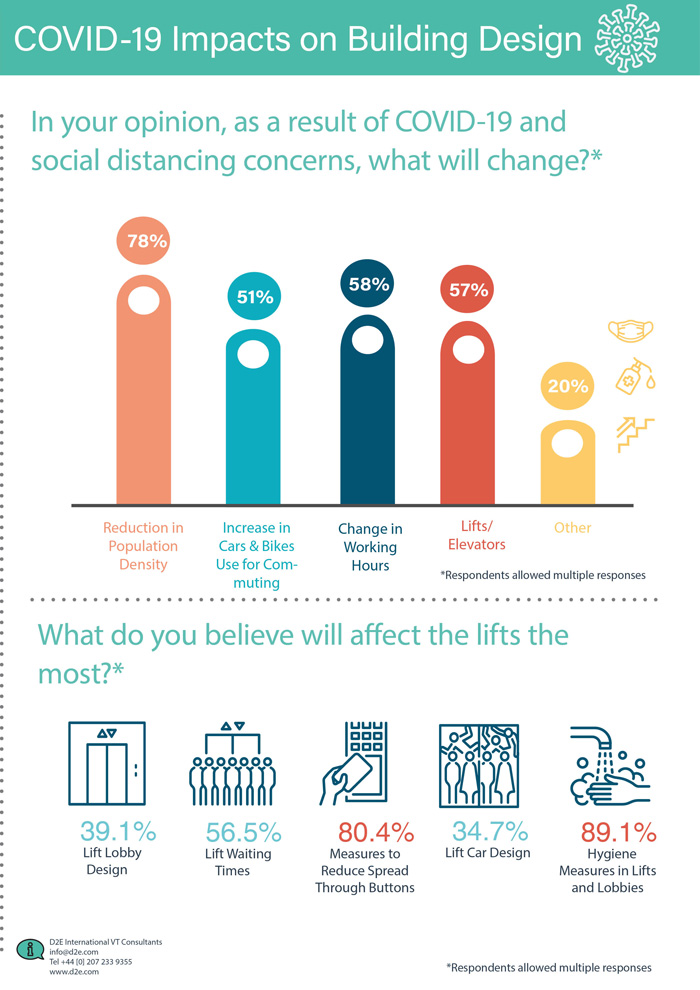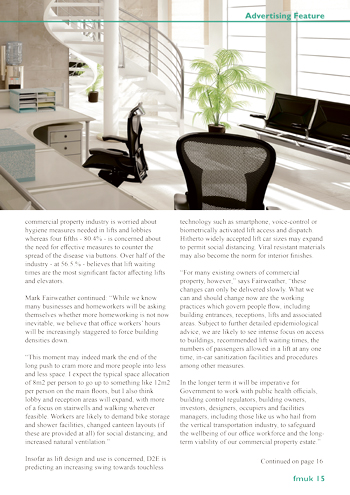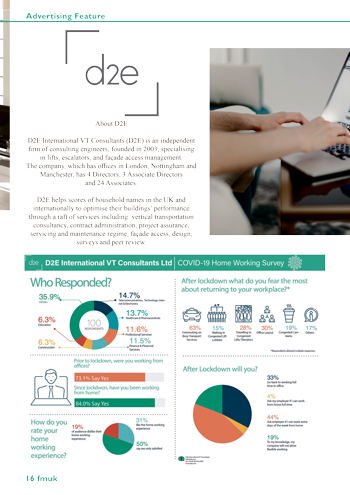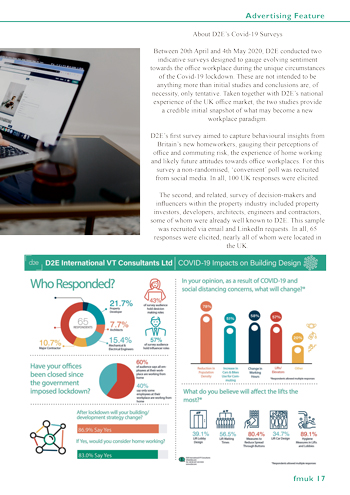Your Day in the Office is Unlikely to Be the Same Ever Again

Indicative Studies from Leading Vertical Transportation Consultants Suggest Lasting Change is Coming to Britain’s Office Sector
D2E, one of the UK’s leading vertical transportation consultancies, has today forecast lasting impacts to Britain’s most common working environment - the office - following the Covid-19 Lockdown. The changes are likely to have far-reaching implications for future building use and design, public transport and home occupation. In announcing its findings, D2E has also called for immediate measures to protect office users and office buildings.
The consultancy’s predictions follow two indicative studies it launched in April to gauge sentiment among two core groups; first, the nation’s new army of lockdown homeworkers and second, the UK’s commercial property industry. Both studies reveal striking levels of changing sentiment towards going to work in an office - and both highlight common areas of concern that lie behind those feelings.
 D2E’s managing director, Mark Fairweather, said: “If the results of our indicative surveys are anything to go by, we are seeing a paradigm shift in the workplace, working practices and commuting habits.”
D2E’s managing director, Mark Fairweather, said: “If the results of our indicative surveys are anything to go by, we are seeing a paradigm shift in the workplace, working practices and commuting habits.”
Among the key conclusions from its homeworker study D2E reports that approaching half - 44% - of respondents now say they will be asking employers to work for at least some days of the week from home. Almost two thirds - 63% - say their greatest fear about returning to work is not so much about the office itself but about commuting on busy public transport. More than a quarter however - 28% - fear travelling in congested elevators, while getting on for a third - 30% - have concerns about their current office layouts. By way of contrast, only one third - 33% - currently expect to return to the office full-time.
The new home-workers’ sentiment is mirrored in the concerns of the decision-makers and influencers whom D2E surveyed within the property industry. A hefty majority of these industry figures, more than three quarters - at 78% - expect office population densities to fall. Almost two thirds - 58% - expect changes in working hours and almost as many think lifts will be one of the facilities to be most affected – with a raft of changes including increasing use of stairs, in-cab medical/sanitisation countermeasures and personal protection such as masks becoming prevalent or indeed mandatory.
Hygiene concerns outrank all others relating to lifts and escalators. Almost 90% (89.1%) of the commercial property industry is worried about hygiene measures needed in lifts and lobbies whereas four fifths - 80.4% - is concerned about the need for effective measures to counter the spread of the disease via buttons. Over half of the industry - at 56.5.% - believes that lift waiting times are the most significant factor affecting lifts and elevators.
Mark Fairweather continued: “While we know many businesses and homeworkers will be asking themselves whether more homeworking is not now inevitable, we believe that office workers’ hours will be increasingly staggered to force building densities down.
“This moment may indeed mark the end of the long push to cram more and more people into less and less space.
“I expect the typical space allocation of 8m2 per person to go up to something like 12m2 per person on the main floors, but I also think lobby and reception areas will expand, with more of a focus on stairwells and walking wherever feasible. Workers are likely to demand bike storage and shower facilities, changed canteen layouts (if these are provided at all) for social distancing, and increased natural ventilation.”
Insofar as lift design and use is concerned, D2E is predicting an increasing swing towards touchless technology such as smartphone, voice-control or biometrically activated lift access and dispatch. Hitherto widely accepted lift car sizes may expand to permit social distancing. Viral resistant materials may also become the norm for interior finishes.
“For many existing owners of commercial property, however,” says Fairweather, “these changes can only be delivered slowly. What we can and should change now are the working practices which govern people flow, including building entrances, receptions, lifts and associated areas.
“Subject to further detailed epidemiological advice, we are likely to see intense focus on access to buildings, recommended lift waiting times, the numbers of passengers allowed in a lift at any one time, in-car sanitization facilities and procedures among other measures.
In the longer term it will be imperative for Government to work with public health officials, building control regulators, building owners, investors, designers, occupiers and facilities managers, including those like us who hail from the vertical transportation industry, to safeguard the wellbeing of our office workforce and the long-term viability of our commercial property estate.”
For full contact details, click here.
D2E International VT Consultants Ltd Covid-19 Home Working Survey Panel 1
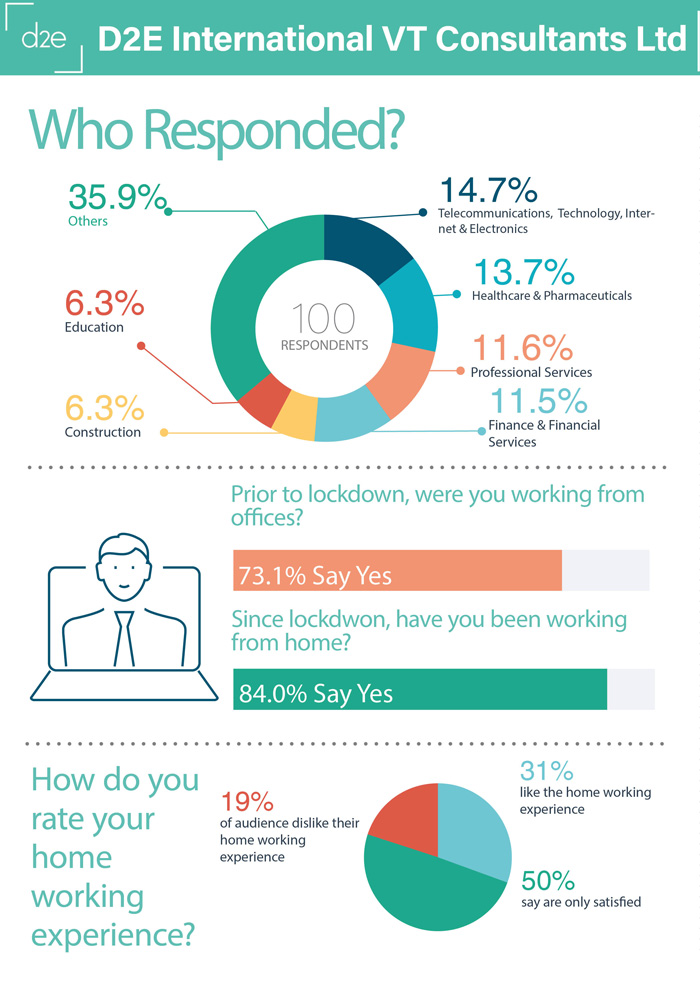
D2E International VT Consultants Ltd Covid-19 Home Working Survey Panel 2
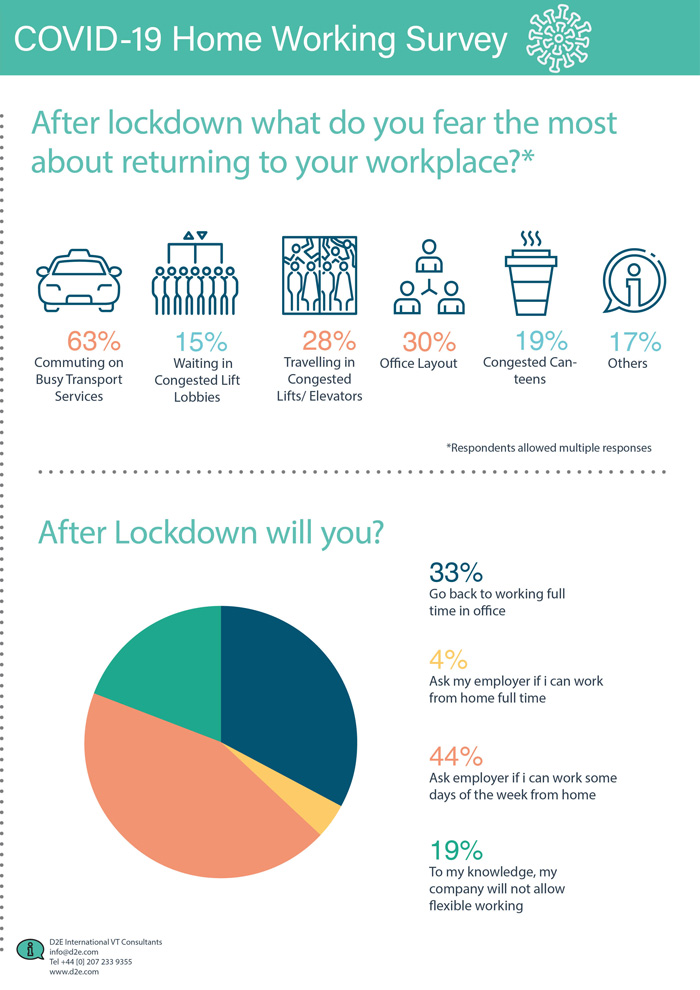
D2E International VT Consultants Ltd Covid-19 Impacts on Building Design Panel 1

D2E International VT Consultants Ltd Covid-19 Impacts on Building Design Panel 2
